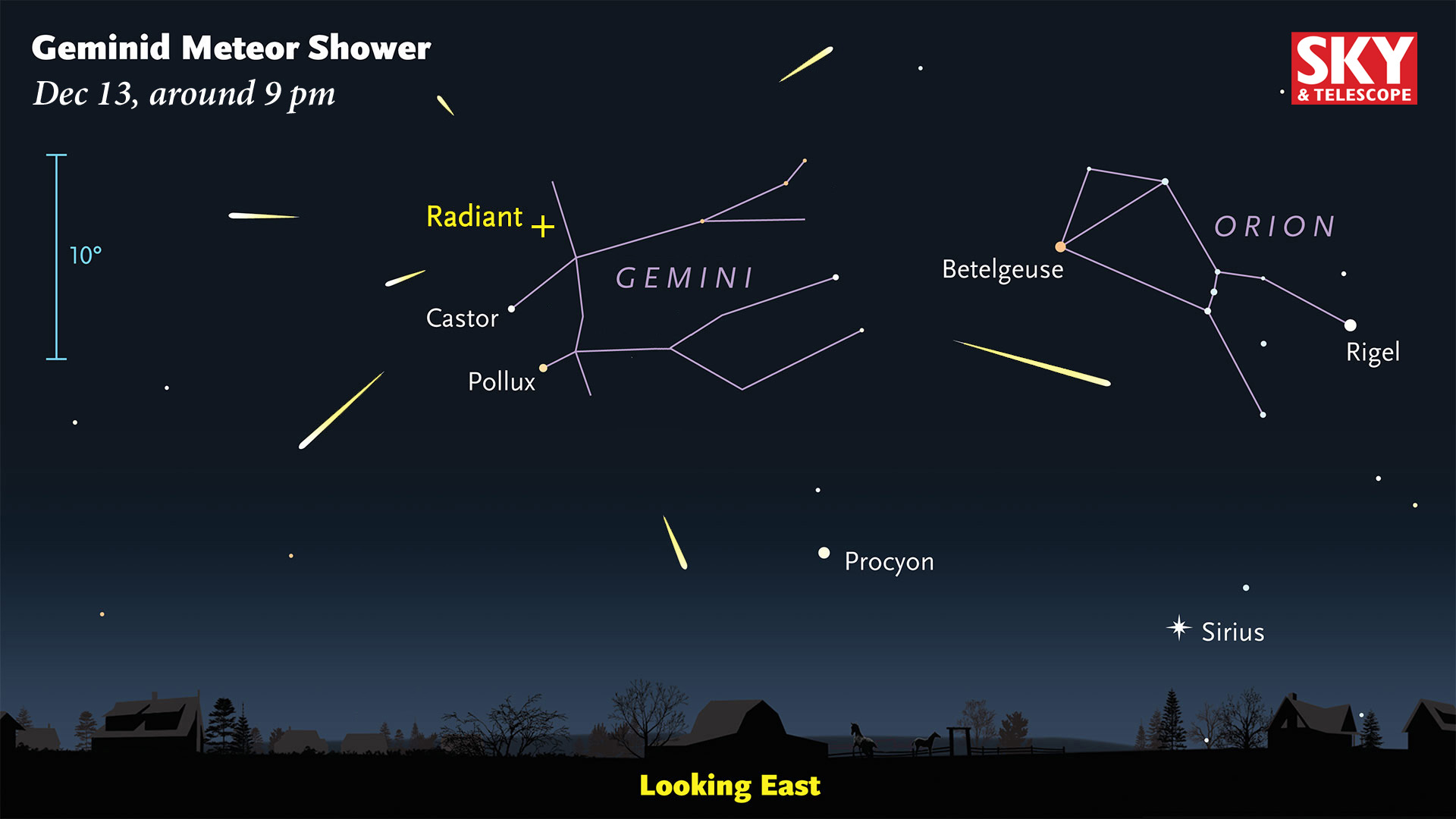Here's the Weather Forecast for the 2018 Geminid Meteor Shower

For those hoping to get a glimpse of the Geminid meteor shower, the weather across the United States will either be very good, with clear skies and excellent viewing prospects, or very bad, with cloud-filled skies and perhaps some rain or wintry precipitation thrown in for bad measure.
The national weather map for the predawn hours tomorrow (Dec. 14) — when the Geminids are expected to be at their best — shows a developing storm near the Texas-Louisiana border. The storm is expected to generate a large swath of dense clouds over much of the eastern half of the nation. From the central Great Lakes south through the Tennessee and Mississippi river valleys and into the central Gulf Coast, the only meteors that will be visible will be those of the hydro variety (raindrops). Over the Florida Panhandle, the rain could be especially heavy with as much as 2 or more inches falling within only a few hours' time. Across much of the south there will be a threat of thunderstorms.
Across the Middle Atlantic and northeastern U.S., not much precipitation is expected. Instead, skywatchers will experience low clouds and spotty areas of mist, drizzle and patches of dense fog. [Geminid Meteor Shower: When, Where & How to See It]
Another storm, situated a few hundred miles off the coast of Washington state, is pushing a cold front into the Pacific coast, producing considerable cloudiness from Washington to California.
But if you live anywhere else, the weather for meteor watching looks just fine. A large high-pressure, "fair weather" system over the central Rockies should produce mainly clear skies across much of the Rockies and Plains States.
Generally, anywhere west of a line extending from Dallas northeast to Traverse City, Michigan, will be in good shape for Geminid viewing. West of the Continental Divide, however, cloudiness will increase because of the unsettled weather systems advancing toward the Pacific coast.
Those in the favored regions for viewing should be sure to bundle up, as overnight temperatures will be in the teens and 20s. One of the drawbacks of the Geminid meteor shower is that prospective viewers are usually subjected to lying on their backs for long intervals in subfreezing temperatures. Such a situation detracts from watching one of the brightest, most reliable and prolific of the year's annual meteor showers.
Get the Space.com Newsletter
Breaking space news, the latest updates on rocket launches, skywatching events and more!
To obtain the latest weather forecast, tailored specifically for your hometown, check the National Weather Service website.
You will find links to National Weather Service Forecast Offices across the United States, as well for Puerto Rico and American Samoa. Just locate your region and click on the weather office nearest to your location; you be able to get the latest weather outlook. (You can also watch the Geminids virtually this evening via a Slooh Online Observatory webcast.)
For those who will miss this year's Geminid shower because of poor weather, we normally would say: "Wait till next year." Unfortunately, we can't even say that. In 2019, a full moon will occur on Dec. 12, just two days before the shower's peak. That means the sky will be lit up by moonlight all through the night, likely hiding all but the brightest "Gems."
It will be much better in 2020 when the Geminids coincide with a new moon.
Joe Rao serves as an instructor and guest lecturer at New York's Hayden Planetarium. He writes about astronomy for Natural History magazine, the Farmers' Almanac and other publications, and he is also an on-camera meteorologist for Verizon FiOS1 News in New York's Lower Hudson Valley. Follow us on Twitter @Spacedotcom and on Facebook. Original article on Space.com.
Join our Space Forums to keep talking space on the latest missions, night sky and more! And if you have a news tip, correction or comment, let us know at: community@space.com.

Joe Rao is Space.com's skywatching columnist, as well as a veteran meteorologist and eclipse chaser who also serves as an instructor and guest lecturer at New York's Hayden Planetarium. He writes about astronomy for Natural History magazine, Sky & Telescope and other publications. Joe is an 8-time Emmy-nominated meteorologist who served the Putnam Valley region of New York for over 21 years. You can find him on Twitter and YouTube tracking lunar and solar eclipses, meteor showers and more. To find out Joe's latest project, visit him on Twitter.










